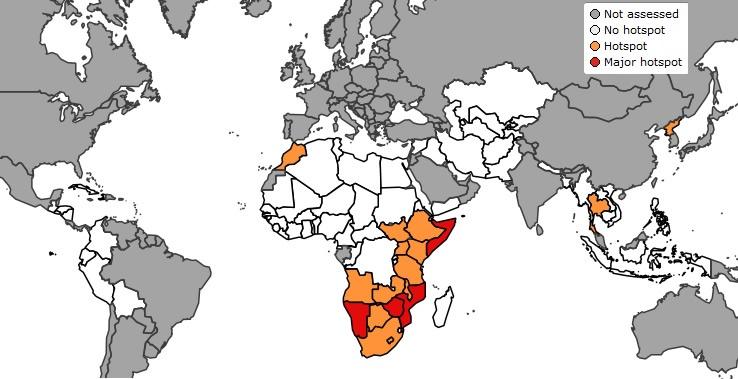
According to the May edition of the JRC's Anomaly Hotspots of Agricultural Production (ASAP) assessment, the partial failure of the first 2019 rainy season in the bi-seasonal areas of the Horn of Africa is causing poor crop and pasture production in Somalia, coastal Kenya, southern Ethiopia and north-eastern Uganda.
The populations of these countries are highly vulnerable to food crises and in many cases are still recovering from the last drought that hit the area in 2017.
In Southern Africa, poor maize harvests caused by prolonged drought and cyclones are driving maize prices upwards in Zimbabwe, Lesotho and Mozambique, and represent a possible challenge to regional maize supply in the second part of 2019.
Main findings of the May global overview:
- Crop production is expected to be 40-50% below-average in Somalia and harvests have also partially failed in coastal Kenya, southern Ethiopia (Belg areas) and north-eastern Uganda.
- Poor maize harvests and drought-driven livestock losses are causing pressure on vulnerable populations in many parts of Southern Africa, including Namibia, Zimbabwe, Mozambique, southern Zambia and Lesotho.
- The winter cereal harvest was close-to-average or above-average in the Middle East, North Africa and Central Asia, with the exception of Morocco where drought caused low barley and wheat yields in the east and centre.
- In South-East Asia, main-season rice planting is delayed in Myanmar, Thailand, Cambodia and Lao due to the late onset of the rainy season, while dry-season rice production is reduced in northern and central Thailand due to lack of water.
- In North Korea, in addition to below-average prospects for early crop production, due to rainfall deficit and frost-kill documented by a recent FAO/WFP report, at the end of May the area of irrigated rice appears to be lower than in the previous year.
The next assessment is scheduled for the end of June 2019.
Further information
Anomaly Hotspots of Agricultural Production (ASAP) assessment
Related Content
Anomaly Hotspots of Agricultural Production (ASAP) assessment
Details
- Publication date
- 4 June 2019
